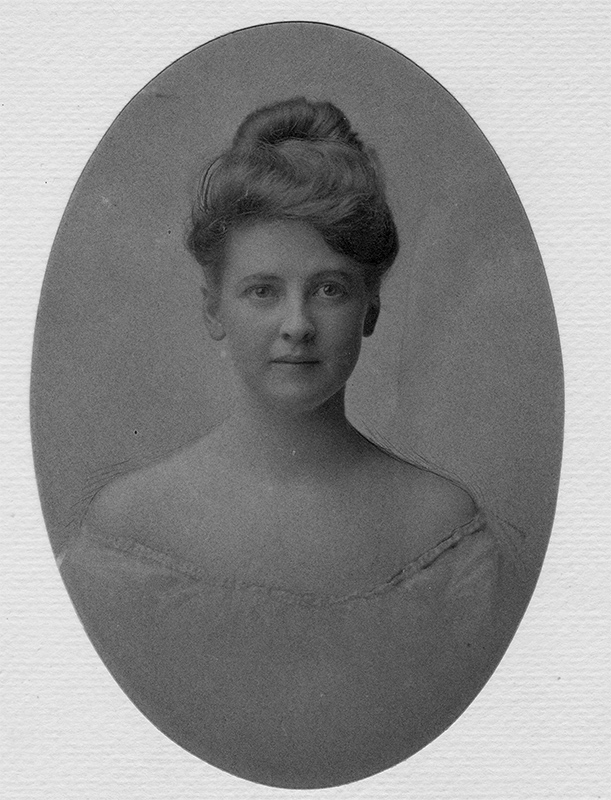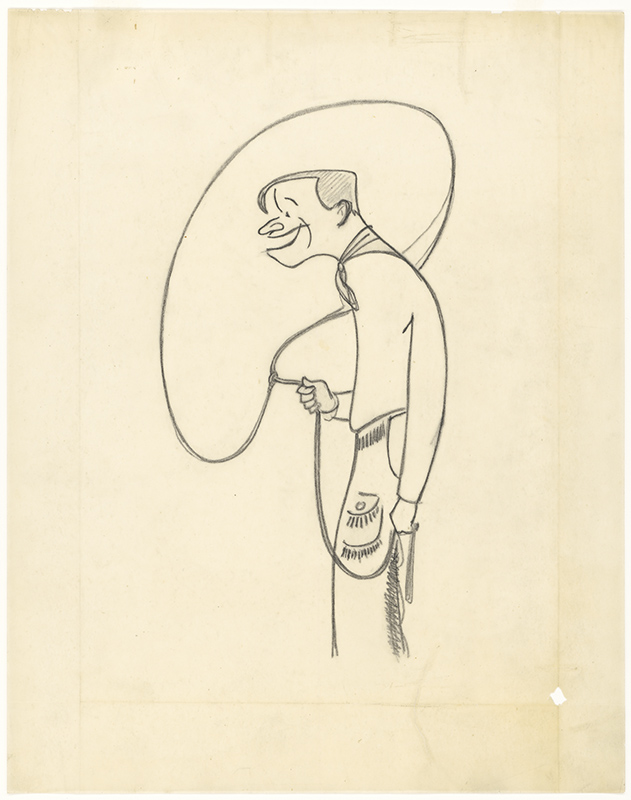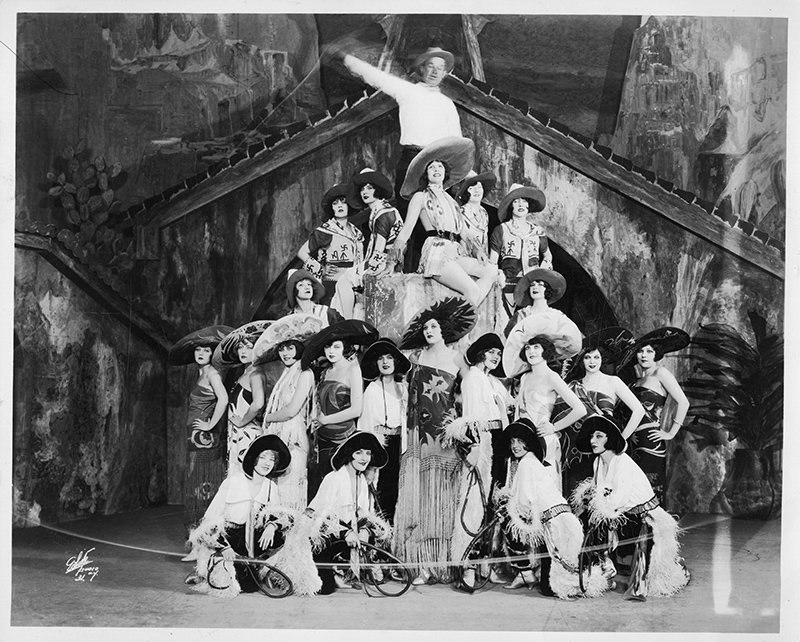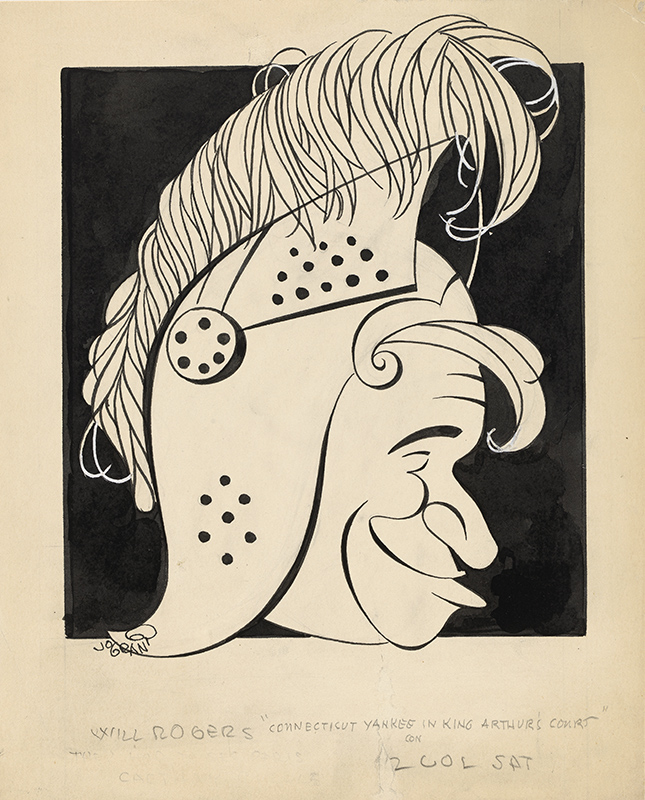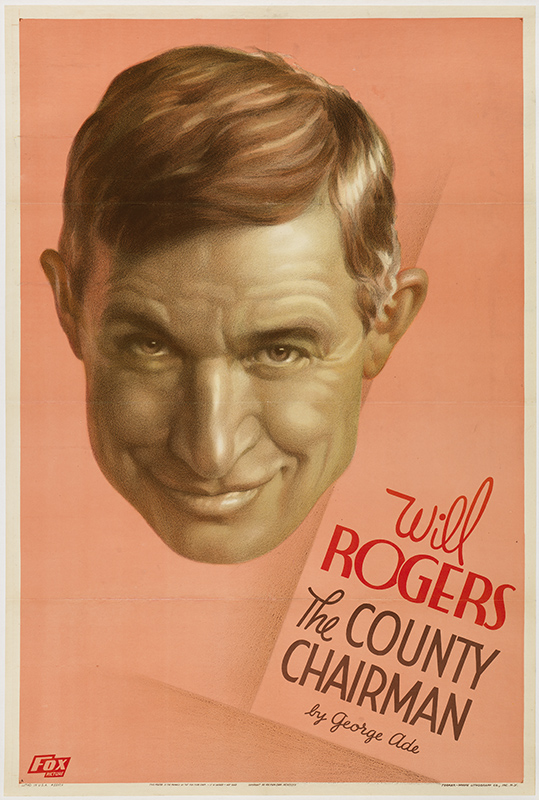Due to the COVID-19 pandemic, the exhibition One Life: Will Rogers is online only and was not installed in the museum galleries.
One Life: Will Rogers

Introduction
The humorist and entertainer Will Rogers (1879–1935) was born to a prominent Cherokee family on a ranch in Indian Territory, near present-day Oologah, Oklahoma. A prolific political commentator whose comedic wit crossed social divides, his career spanned vaudeville, silent films, “talkies,” radio, and newspaper. Rogers lifted the nation’s spirits during some of its most trying times—World War I, the recession that followed, and the Great Depression. During his late teens, he embraced a wanderlust, traveling as a circus performer with a lasso. Defying stereotypes of the rugged cowboy, Rogers was also a great intellect, who authored six books, appeared in seventy-one films, wrote four thousand syndicated newspaper columns, and hosted a popular Sunday evening radio program.
Of his wide-ranging career in vaudeville, Hollywood, and journalism, Rogers remarked: “Everything I have done has been by luck.” Luck may have played a part as his roles evolved from unerring cowboy with a lasso to popular movie star and syndicated columnist, but throughout his evolving career, Rogers remained plainspoken, honest, and humorous. This genuine personality helped him forge a vast social network, which included presidents and foreign dignitaries. The precursor to Mickey Rooney, or today’s Stephen Colbert, Rogers voiced a perspective with broad appeal to the masses in the first half of the twentieth century.
This exhibition has been funded by the Guenther and Siewchin Yong Sommer Endowment Fund and a grant from the Smithsonian Women’s Committee.
Click on the images for more information.
[Note: On mobile devices tap the image to access the navigational bar. To view label information tap the square graphic. For Spanish tap the square then ES. To exit, tap X.]
“The Ropin’ Fool”: From Farmhand to Vaudeville
Will Rogers’s skill in throwing a lariat (lasso) came with assiduous practice. Almost by chance, he won his first steer-roping contest in Claremore, Oklahoma, on July 4, 1899, when eight of ten contestants failed to show up. Subsequent contests gave Rogers a taste for show business, and in 1902, he joined Texas Jack’s Wild West Show & Circus in South Africa as the “Cherokee Kid.” The popularity of Wild West shows—especially those featuring Native Americans—was fueled by nostalgia for what seemed like a vanishing American way of life during a period of increasing industrialization and urbanization. By the turn of the century, this form of entertainment had become an international phenomenon.
When Rogers returned home in 1900, he was an accomplished showman. “Show business had gotten into my blood,” he said, “and I was ruined for life as far as any actual work was concerned.” Rogers hit his stride in vaudeville, a mix of specialty acts, such as burlesque comedy, song, and dance. that hit its peak as a popular form of American entertainment around 1905. By 1910, he had created a sensational act by mixing roping with witty conversational monologues.
In 1921, Rogers directed and produced his first film, The Ropin’ Fool, in which he also played a man who was determined to rope anything. But the venture was not successful, and he lost $45,000 in savings (about a half million in today’s dollars). Later, Rogers yearned for the artistic freedom of his vaudeville days, explaining, “No branch of entertainment was ever so satisfying to work in. Never was there such independence. It was your act.”
Hollywood Star and Political Commentator
After World War I, Will Rogers found success as a writer, which helped launch his career as a screenwriter and as an actor in silent films. He had started publishing gags in 1919 with Rogers-isms: The Cowboy Philosopher on the Peace Conference and Rogers-isms: The Cowboy Philosopher on Prohibition. With his razor-sharp wit and distinct talent in writing jokes, Rogers was a natural choice for studios like Samuel Goldwyn Films and Fox Film Corporation. In the 1920s, he starred in fifty silent comedic films and, beginning in 1929, appeared in twenty-one sound pictures. The latter allowed him to audibly deliver his wry humor.
Referring to the sound films as “noisies,” Rogers saw them as an opportunity to comment on politics, just as he had in his vaudeville acts for Follies and in his syndicated newspaper columns. In 1935, at the time of his tragic death in an airplane crash, Rogers was Hollywood’s best paid actor.
VIDEO GALLERY
Will Rogers may have begun his career as a lassoer but his mannerisms, easy humor, and ability to speak truths, made him one of the most influential men of his time. Politicians and blue-collar workers alike trusted and sought his advice on major issues. He was a credible voice whose commentary still resonates today. This video gallery contains a small sampling of his many radio and film appearances.
The Ropin’ Fool (click for expanded view), 1922, ® Mark Allen Productions, © 1989-2003 The Rogers Company under license authorized by Curtis Management Group, Indiana, U.S.A. All rights reserved
“Bacon, Beans, and Limousines" (click for expanded view), 1931, provided by Will Rogers Memorial Museum, OHS, Claremore, OK
Will Rogers Tells Traffic Chiefs How to Direct Traffic (click for expanded view), 1923, courtesy of Sony Music Entertainment
Dedication of Coolidge Dam (click for expanded view), 1930, provided by the University of South Carolina Moving Image Research Collections
Will Rogers Puts Laugh in Presidential Campaign (click for expanded view), 1933, source: Reuters via British Pathé

